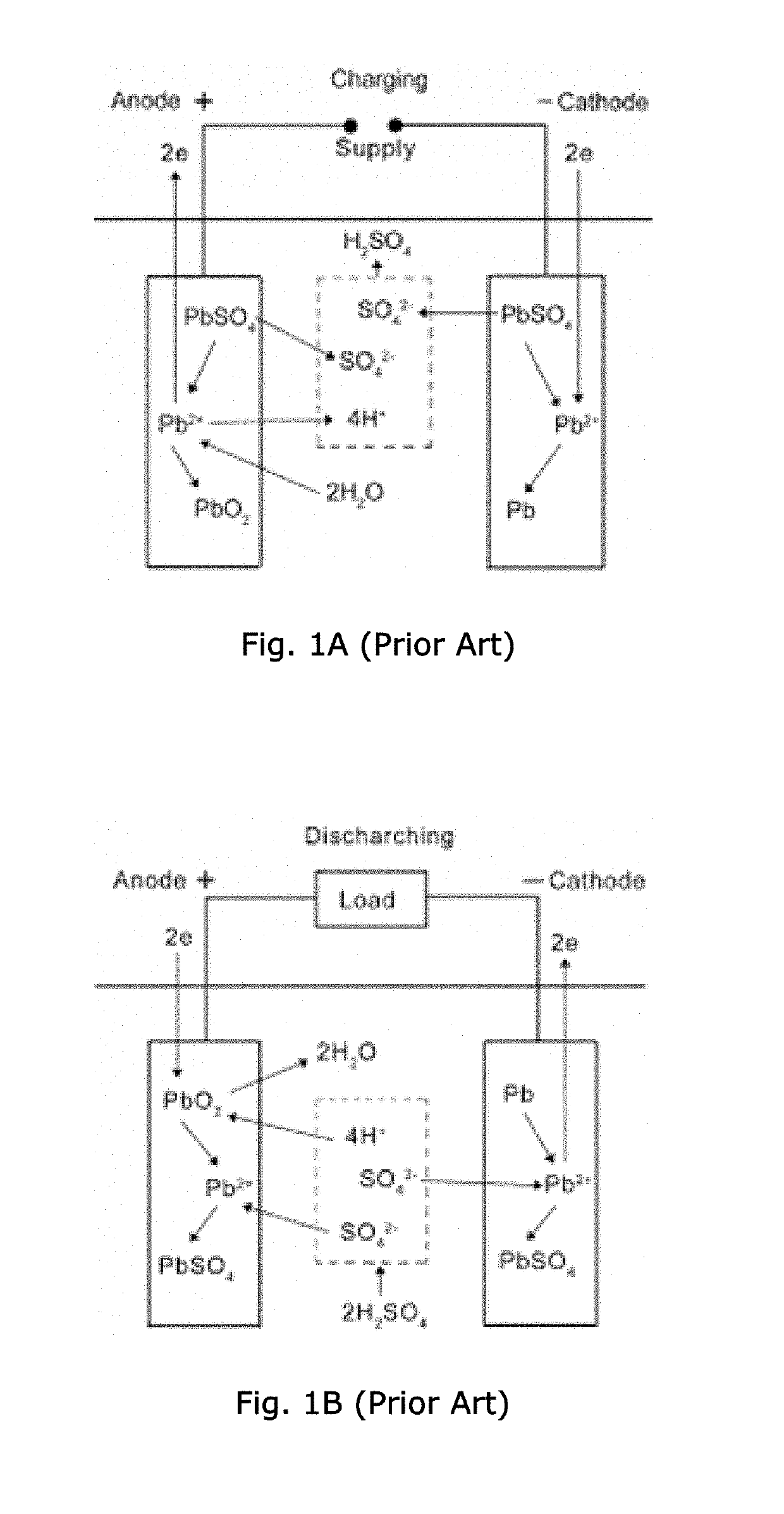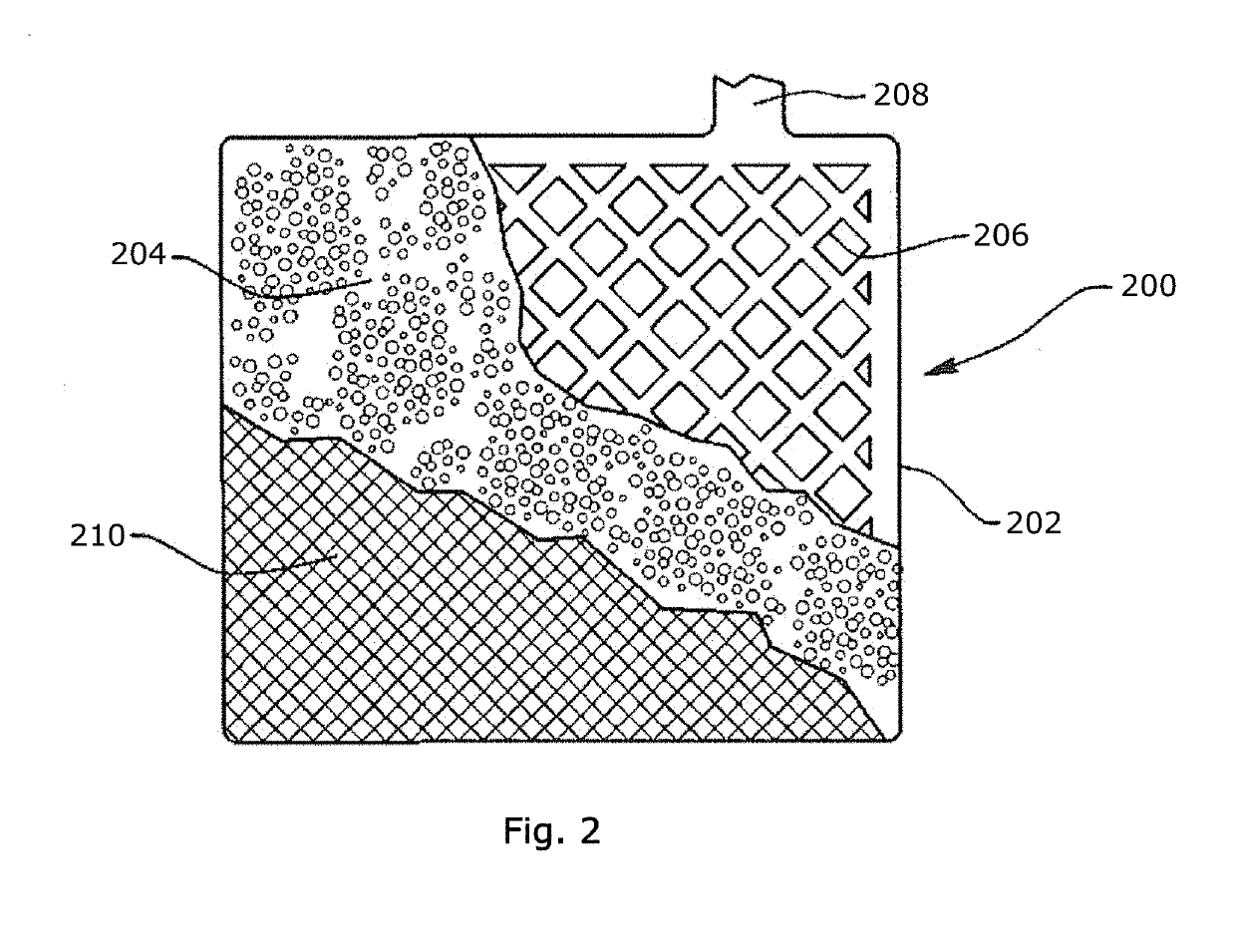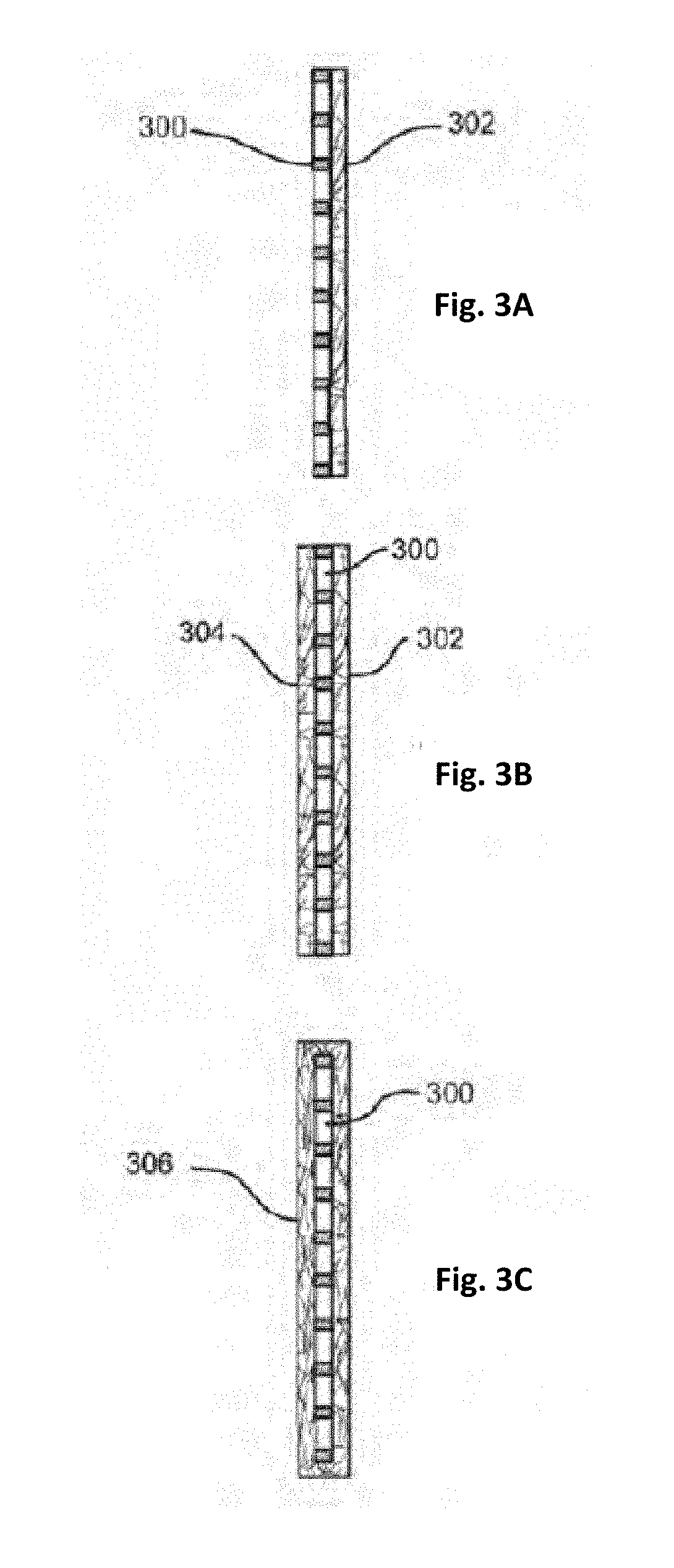Polymer fiber-containing mats with additives for improved performance of lead acid batteries
- Summary
- Abstract
- Description
- Claims
- Application Information
AI Technical Summary
Benefits of technology
Problems solved by technology
Method used
Image
Examples
example 1
[0082]Electrochemical Compatibility (ECC) tests by direct addition can be conducted to evaluate the impact of TegMeR® 812 (from Halister). The hydrogen evolution potential can be tested using the established Electrochemical Compatibility (ECC) test as described in Battery Counsel International's Technical Manual BCIS-03A, Rev. September 09, for testing the effect of additives on the electrochemistry of Pb / PbSO4 / PbO2 electrode systems. For the testing, the aqueous sulfuric acid can have a specific gravity of 1.210 (about 28.9 wt. % H2SO4 in water). In this method, the quantity of the additive (e.g., TegMeR® 812) is known and can be changed easily. The hydrogen evolution potential of the glycol ester additive can be compared with a control sample of the sulfuric acid electrolyte.
[0083]Cathodic voltammetry scans can be performed as follows: First, a 100 ml sample of sulfuric acid (specific gravity of 1.210 or 28.9 wt. % H2SO4 in water) was added into the glass cell and a cathodic scan ...
example 2
[0085]Electrochemical Compatibility (ECC) tests by direct addition can be conducted to evaluate the impact of vanillin. The hydrogen evolution potential can be tested using the established Electrochemical Compatibility (ECC) test as described in Battery Counsel International's Technical Manual BCIS-03A, Rev. September 09, for testing the effect of additives on the electrochemistry of Pb / PbSO4 / PbO2 electrode systems. For the testing, the aqueous sulfuric acid can have a specific gravity of 1.210 (about 28.9 wt. % H2SO4 in water). In this method, the quantity of the additive (e.g., vanillin) is known and can be changed easily. The hydrogen evolution potential of the vanillin additive can be compared with a control sample of the sulfuric acid electrolyte.
[0086]Cathodic voltammetry scans can be performed as follows: First, a 100 ml sample of sulfuric acid (specific gravity of 1.210 or 28.9 wt. % H2SO4 in water) was added into the glass cell and a cathodic scan was performed (scanned cur...
example 3
[0088]An antimony suppression test (AST) may be conducted according to the procedure described in Böhnstedt, W.; Radel, C.; Scholten, F. “Antimony poisoning in lead-acid batteries”, Journal of Power Sources, Volume 19, Issue 4, p. 307-314. The AST is a test to check the impact of an additive on hydrogen evolution when antimony (Sb) is present. This is the case for most deep cycle batteries, where antimony is added in the plates to increase the cycle life of the battery. However, water loss increases significantly due to the addition of antimony, and it is a goal to reduce the hydrolytic water loss in lead-acid batteries due to the presence of antimony. The AST test procedure includes three linear scans −1200 to −700 mV after 15 min. maintained at −1200 mV. The first scan is Blank (100 mL electrolyzed 1.21 sg H2SO4) scan. The second scan is with addition of Antimony (1 mL of 1000 ppm Sb added into 100 mL of H2SO4, so the Sb level is ˜10 ppm). The third scan is with addition of the ad...
PUM
 Login to View More
Login to View More Abstract
Description
Claims
Application Information
 Login to View More
Login to View More - R&D
- Intellectual Property
- Life Sciences
- Materials
- Tech Scout
- Unparalleled Data Quality
- Higher Quality Content
- 60% Fewer Hallucinations
Browse by: Latest US Patents, China's latest patents, Technical Efficacy Thesaurus, Application Domain, Technology Topic, Popular Technical Reports.
© 2025 PatSnap. All rights reserved.Legal|Privacy policy|Modern Slavery Act Transparency Statement|Sitemap|About US| Contact US: help@patsnap.com



